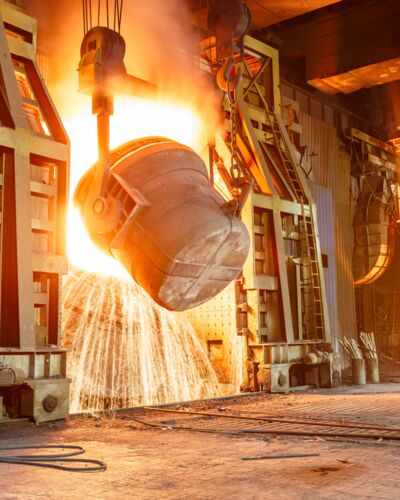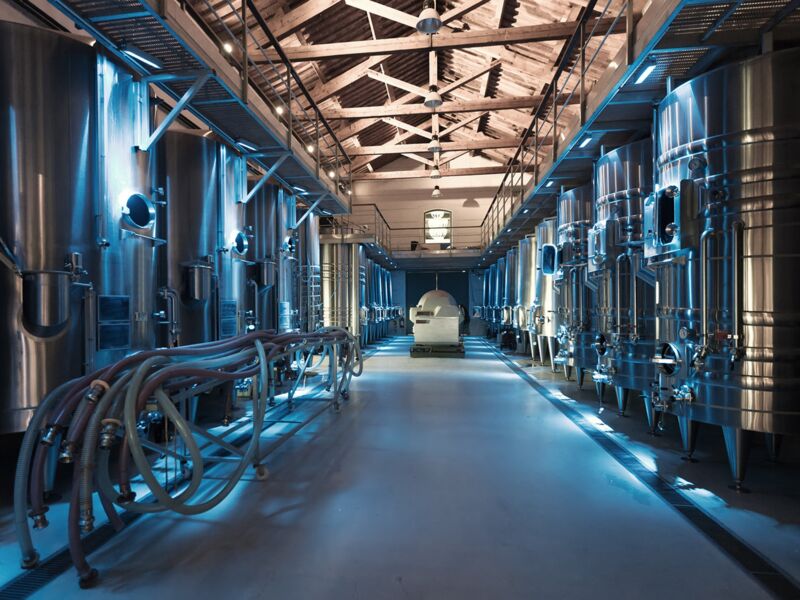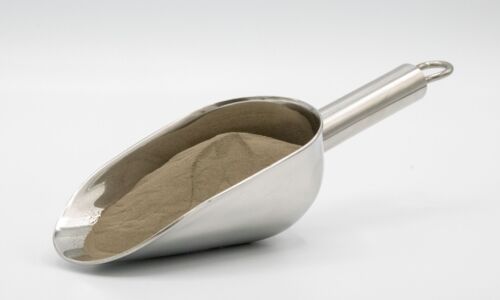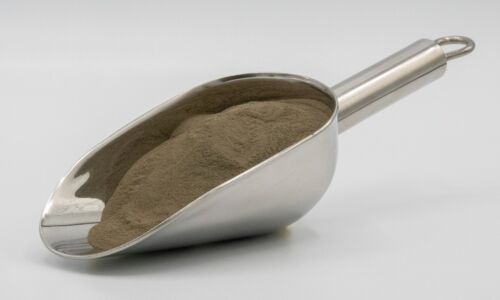Silicon Carbide (SiC)
The annual production of silicon carbide (SiC) exceeds 800,000 t, making it by far the most used non-oxide ceramic. In the past it has been used almost exclusively as an abrasive material, which still accounts for a major part of its usage. The development of new processes for the production of dense components with favourable mechanical properties enabled new fields of application. Its extraordinary hardness, resistance to thermal shock and chemical stability, especially towards acids and alkalis, make SiC the material of choice for highly aggressive conditions. It is used as a refractory and for electric heating in furnaces. Sliding bearings that are exposed to corrosive media are often composed of SiC. Due to its high resistance against abrasion even at high temperatures carbon fibre-reinforced SiC is used for brake discs in high-speed trains and sports cars [SCH15].
Due to its high thermal conductivity, silicon carbide is ideally suited for pipes in high-temperature heat exchangers that are used up to 1000 °C [Hül14]. Although silicon carbide forms a surface oxide layer at high temperatures as a non-oxide ceramic, it is quite possible to expose it to air at high temperatures because the silicon oxide layer is temperature resistant. This enables use in waste incineration and acid pickling plants [Hül14] as well as in tunnel kilns in the ceramics industry [Sal07]. Nevertheless, the thermal resistance is higher in vacuum applications [Gul72].

Silicon carbide grains continue to be used as grinding and cutting agents. Both the high wear resistance and the high thermal conductivity of up to 4.9 W / (cm * K) [Wei96] are very favorable properties. Due to its abrasion resistance, ball mills are another application of silicon carbide.
Silicon carbide is used in the metal industry because of its chemical resistance to many melts. Examples of metals whose contact with silicon carbide is unprovincing are aluminum, copper, lead, zinc, tin, and cadmium. On the other hand, silicon carbide damages liquid iron, nickel, cobalt because these materials form alloys or silicides with silicon [Sal07].
An essential special case in the application of silicon carbide as a structural material are fiber-reinforced materials. Silicon carbide fibers can be prepared from precursors wet-chemically with subsequent heat treatment [Has80] [Yaj78] and have an outstandingly high strength and a high modulus of elasticity [Yaj78]. Typically, the fibers are used in silica of predominantly vitreous structure and significantly smaller modulus of elasticity [Bre03]. The mechanical properties of the glass are significantly improved while the silicon carbide is completely protected against oxidation [Bre03].
The combination of glass and silicon carbide fibers provides an excellent combination of crack toughness, elevated temperature strength and density [Pre80].

Silicon carbide also has great potential as a semiconductor material. Its high durability gives the material applications as an electronic component in aerospace, nuclear fission power plants and satellites [Cas96]. Silicon carbide in the electronics industry is suitable for high temperature ranges up to 600 °C [Por95], high frequency technology [Cas96] and high voltage engineering [Neu95]. One challenge, however, is the control of the contact points between the silicon carbide and the conductor [Por95]. Relevant for the described applications is only the α-phase of the silicon carbide [Por95].
Silicon carbide is present in a hexagonal α-modification and a cubic β-modification [Spi59]. The bonds are predominantly covalent. The atoms have a tetrahedral coordination [Sal07]. The hexagonal shape is the thermodynamically stable phase while the cubic shape is formed only at certain rates of temperature change, impurities, pressures and atmospheres [Sal07].
Silicon carbide is typically produced using the Acheson process, which typically synthesizes the α-phase. Quartz sand and petroleum coke are converted into silicon carbide and carbon monoxide. The process is carried out by a 10 to 60 meter long heating element made of carbon, which is surrounded by a bed of silicon oxide, petroleum coke and other additives. A high voltage supply initiates the endothermic reaction and leads to temperatures of 2000 to 2400 °C [Sal07].
After the produced silicon carbide has been pulverized by grinding processes, the molding of the component and the sintering process, for which a wide range of processes have been developed, are carried out. As a result, the properties can be changed in many areas.
Since the relevant diffusion coefficients would only be sufficient for acceptable compaction at sintering temperatures above 2400° C, at which silicon is already evaporating from the material, it is possible to carry out the compaction by costly hot isostatic pressing and produce a component which withstands the highest demands [Hül14]. A simple heat treatment is not enough, as the thin layer of silicon oxide covers the edge of the powder particles [Sal07].
Nevertheless, pressureless sintered silicon carbide can be produced using additives [Sal07]. Another possibility is the infiltration of the silicon carbide with about 10 – 15% silicon melt, which binds the powder of silicon carbide [Nes86], whereby so-called reaction-bound silicon carbide is formed. This allows a lower temperature in the sintering process. Similarly, in the case of the ceramic-bonded silicon carbide, a second ceramic material may be added which forms the matrix of the microstructure into which the grains of silicon carbide are incorporated [Sal07].
Recrystallized silicon carbide enables the production of a non-shrinkage member by sintering very fine and very coarse grains together, with only the fine grains forming the bonds between the coarse grains and leaving a large residual porosity [Sal07].
Alternatively, the production of very pure silicon carbide can also be effected by gas-phase reactions and wet-chemical processes in which organometallic precursors are used [Sal07].















